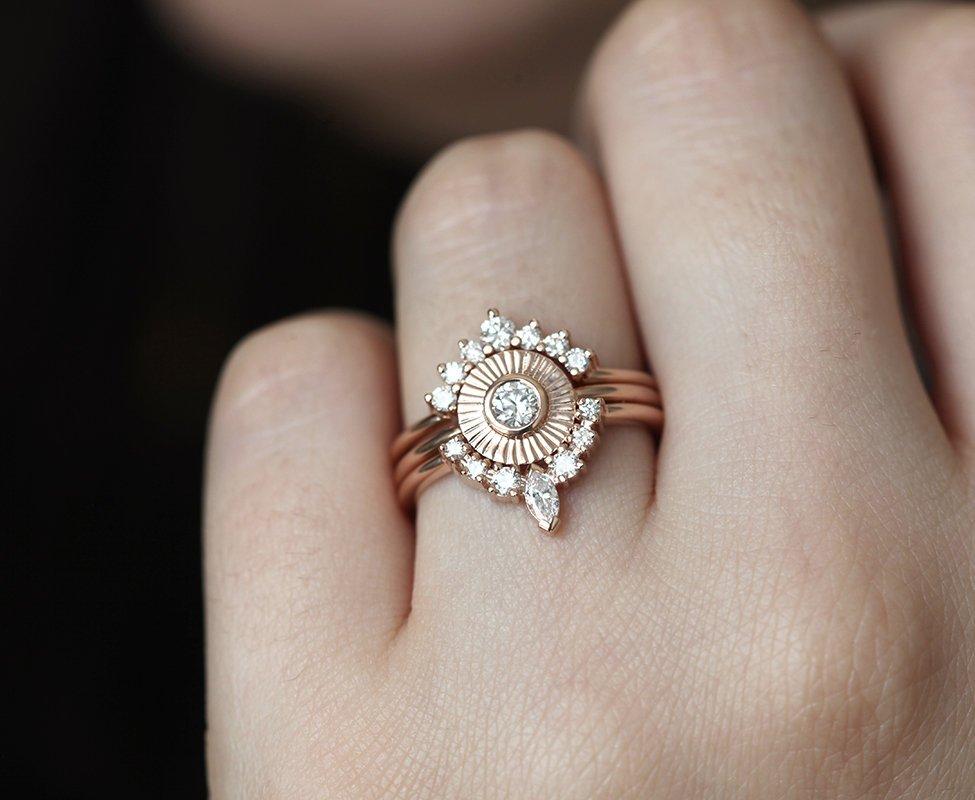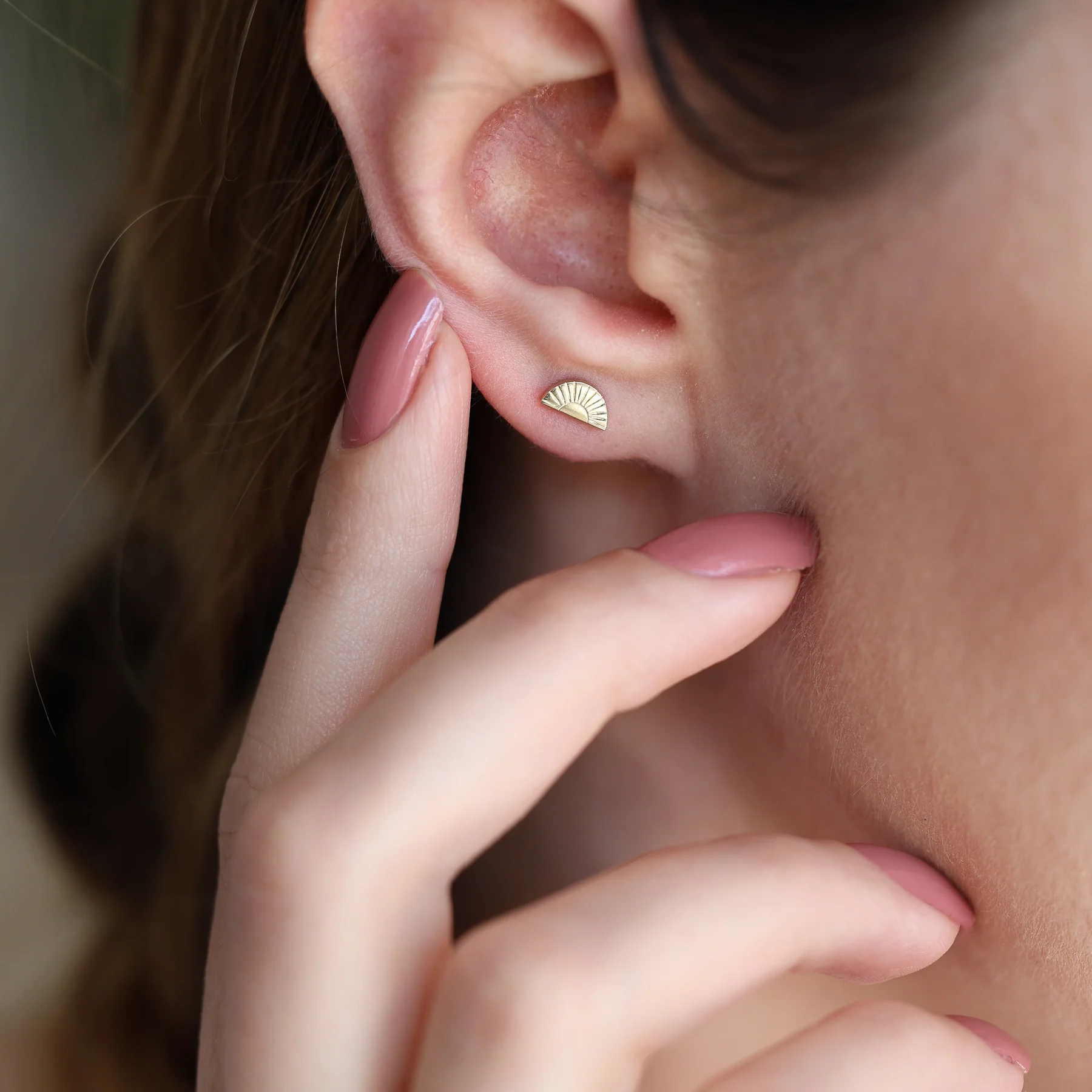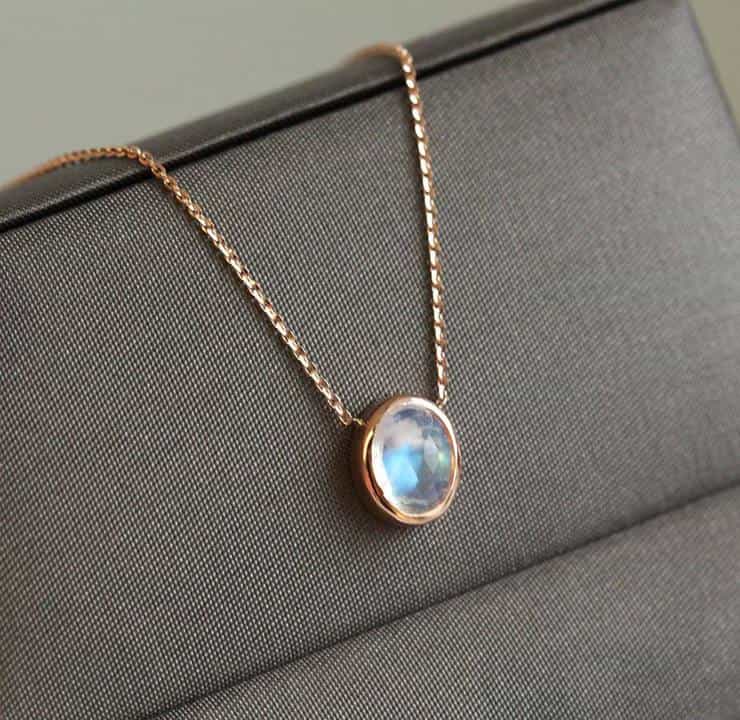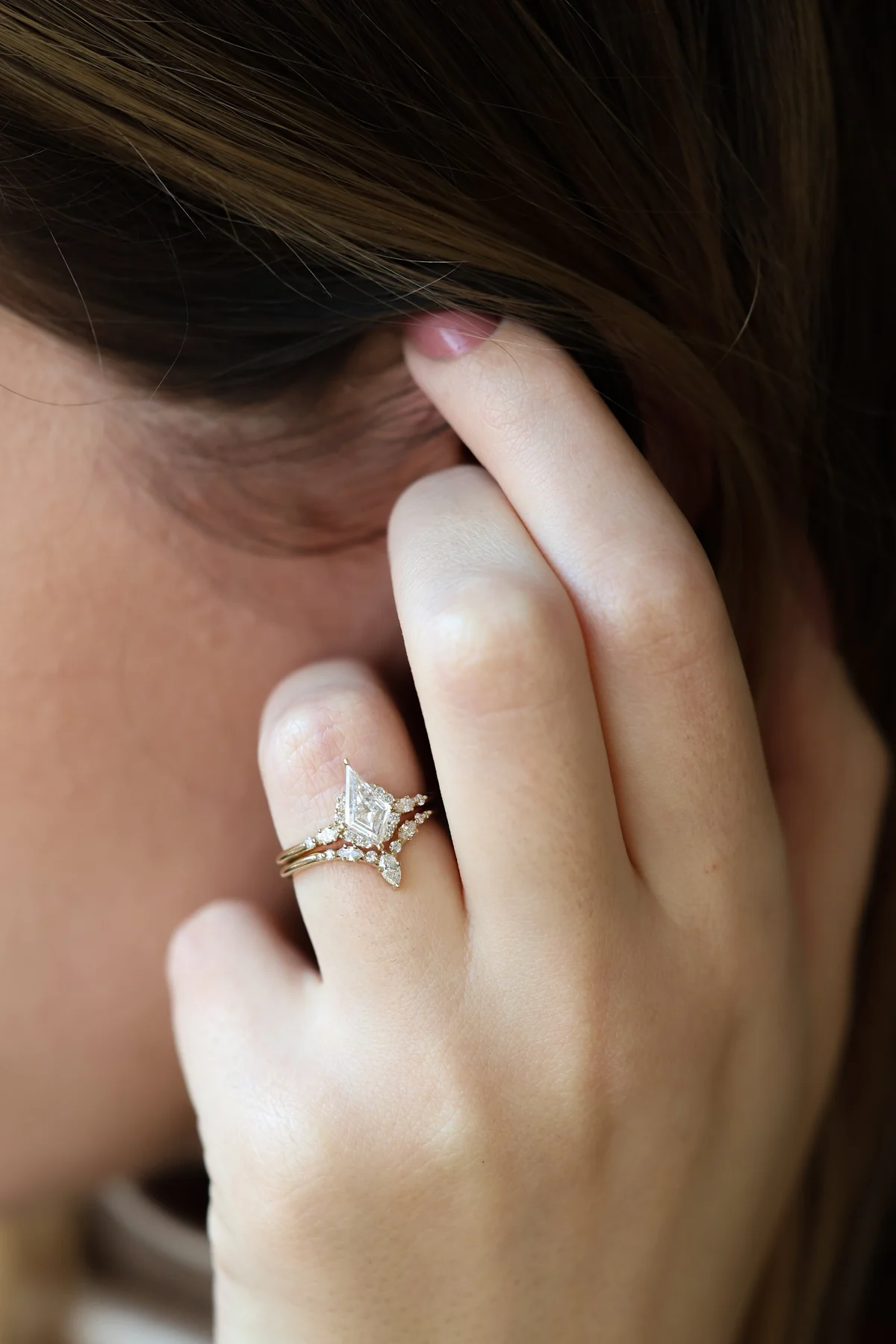Yellow gold has been a symbol of elegance and luxury for centuries. Its rich and lustrous appearance has captivated humanity for centuries, and even in today’s diverse and ever-evolving market, yellow gold continues to hold its own. In this article, we will explore its purty, properties, comparision, and what makes it so special.
Table of Contents
ToggleWhat is yellow gold?
Yellow gold is a type of gold that has a bright, shiny, and, you guessed it, yellow color! It’s made by mixing pure gold with a bit of other metal, like copper and silver. This mixture makes the gold stronger and gives it that beautiful golden color.
People have been using yellow gold for jewelry and decorations for a very long time because it looks really pretty and doesn’t tarnish easily. Rings, necklaces, bracelets, and even crowns can be made from yellow gold.
So, when someone talks about yellow gold, they’re usually talking about this special type of gold that’s a bit stronger and has that lovely golden shine. It’s a popular choice for making all sorts of beautiful things, especially jewelry.

The Rich History of Yellow Gold
Yellow gold has a rich history that spans thousands of years. It was highly prized in ancient civilizations such as Egypt, where it was associated with divinity and used to create intricate jewelry for the pharaohs. Throughout history, yellow gold has been a symbol of wealth, power, and prosperity, often adorning the crowns and regalia of kings and queens.
Composition and Purity of Yellow Gold
Yellow gold, renowned for its rich and lustrous appearance, is predominantly crafted from pure gold (Au). However, to enhance its durability and strength, it is blended with small amounts of other metals, forming alloys.
The level of purity in yellow gold is measured in karats, with higher karats containing a greater percentage of pure gold. This balance of composition and purity allows for a diverse range of stunning jewelry and decorative items, each with its unique characteristics.
composition of yellow gold
Yellow gold is a beautiful and popular metal used in jewelry, but have you ever wondered what it’s made of? Yellow gold is primarily composed of pure gold (known as “Au” on the periodic table), which gives it its shiny and distinct yellow color.
To make yellow gold stronger and more durable for jewelry, it is often mixed with small amounts of other metals, such as copper and silver. These alloying metals not only enhance the gold’s strength but can also subtly change its shade. The exact composition of yellow gold can vary depending on its purity, which is measured in karats.
What is karat in yellow gold?
Karat, when referring to yellow gold, is a measure of its purity. It’s not to be confused with the unit of weight, “carat,” used for gemstones. The letter “K” denotes karats and indicates the proportion of pure gold within a gold alloy.
How pure is yellow gold?
Yellow gold is rarely used in its pure form (24 karats) for jewelry or other applications because it is too soft and can be easily scratched or damaged. It is often alloyed with other metals to increase its strength and durability. Here’s a table with information on the most common gold purity levels and their corresponding karats:
| Gold Purity | Karats | Gold Percentage | Common Use |
|---|---|---|---|
| 24K Gold | 24 | 99.9% pure gold | Investment and bullion |
| 18K Gold | 18 | 75% pure gold | High-end jewelry |
| 14K Gold | 14 | 58.3% pure gold | Popular for jewelry |
| 10K Gold | 10 | 41.7% pure gold | Affordable jewelry |
| 9K Gold | 9 | 37.5% pure gold | Common in some regions |
As you can see, 24K gold is the purest form, but it’s not commonly used in jewelry due to its softness. Instead, jewelers typically work with 18K, 14K, or 10K gold, which are alloyed with other metals to make them more durable and suitable for various jewelry pieces. The lower the karat, the less pure gold it contains, but it is also more resistant to wear and tear.
Characteristics of Yellow Gold
Yellow gold, known for its timeless allure, possesses several distinctive characteristics that make it a popular choice for jewelry and decorative items. Here are some of its key features:
1. Color and Purity
Yellow gold gets its warm hue from its natural composition, which is typically a combination of pure gold and other metals like copper and silver. The purity of gold is measured in karats, with 24-karat gold being the purest. However, 24-karat gold is often too soft for jewelry, so it is alloyed with other metals to enhance its durability.
2. Durability
Yellow gold is highly durable and can withstand the rigors of everyday wear. Its ability to maintain its luster and beauty over time makes it an excellent choice for jewelry that will last for generations.
3. Versatility
The versatility of yellow gold is another reason for its popularity. It can be molded into various intricate designs and combined with different gemstones to create unique and stunning pieces.
4. Hypoallergenic Properties
Yellow gold is generally hypoallergenic, making it suitable for those with sensitive skin. Its compatibility with the human body makes it an ideal choice for engagement rings and other jewelry worn regularly.
Yellow Gold Pros and Cons
Yellow gold has been treasured for centuries for its warmth and timeless appeal. While it’s a popular choice for jewelry and decorative items, like any material, it comes with its own set of advantages and disadvantages. Here are the pros and cons of yellow gold:
Pros of Yellow Gold:
- Classic and timeless appeal.
- Radiant and warm color.
- Versatile for various designs.
- Malleable for intricate jewelry.
- Durable with alloying.
- Hypoallergenic and tarnish-resistant.
Cons of Yellow Gold:
- Higher price for purer gold.
- Susceptible to scratches.
- May not complement all skin tones.
- Potential for allergic reactions.
- Requires periodic maintenance.
- Prone to dents in softer alloys.
Yellow Gold vs. Other Gold Alloys
Yellow gold is not the only gold alloy in existence. Two popular alternatives are white gold and rose gold. Each alloy has its unique properties and appeal.
- White Gold: White gold is created by mixing gold with white metals like nickel, palladium, or silver. It has a silvery-white color and is often coated with a thin layer of rhodium for added brightness.
- Rose Gold: Rose gold combines gold with copper to achieve its signature pinkish hue. It’s a romantic and trendy choice for jewelry.
The choice between these alloys depends on personal preference and style. While yellow gold is classic and timeless, white and rose gold offer modern and distinctive options.

Yellow Gold vs. Platinum & Silver: A Comparison
Yellow gold, Platinum, and Silver are all precious metals commonly used in jewelry. Here’s a combined overview of the differences between these metals:
Color:
- Yellow Gold: Yellow gold has a warm, yellowish hue, giving it a classic and traditional appeal.
- Platinum: Platinum has a naturally silvery-white color that doesn’t fade or tarnish over time, providing a timeless and elegant look.
- Silver: Silver is known for its lustrous, bright, and reflective white color, although it can tarnish over time.
Composition:
- Yellow Gold: Yellow gold is also an alloy, typically mixed with metals like copper and silver to achieve its color and improve strength.
- Platinum: Platinum is a pure metal and is often considered the most precious of all jewelry metals, known for its rarity and purity.
- Silver: Silver jewelry is typically made from sterling silver, which consists of 92.5% pure silver and 7.5% copper or other metals for strength.
Purity:
- Yellow Gold: Available in various karats, from 24K (pure gold) to lower karats like 18K and 14K, each with different gold content.
- Platinum: Platinum jewelry is typically 90-95% pure platinum, making it highly valuable.
- Silver: Sterling silver contains 92.5% pure silver, while other silver alloys may have different compositions.
Durability:
- Yellow Gold: Yellow gold, when alloyed, becomes durable and resistant to tarnish, requiring minimal maintenance.
- Platinum: Platinum is highly durable, resistant to corrosion and tarnishing, and is often preferred for engagement rings and wedding bands.
- Silver: Silver is softer and more susceptible to scratches and tarnish, making it better suited for less frequent wear.
Allergies:
- Yellow Gold: Typically hypoallergenic and suitable for those with metal allergies.
- Platinum: Generally hypoallergenic and safe for those with metal sensitivities.
- Silver: Generally well-tolerated but can cause allergies in some individuals.
Versatility:
- Yellow Gold: Offers a classic and timeless appeal, making it a favorite for traditional and vintage-inspired pieces.
- Platinum: Often chosen for its understated and elegant look, suitable for both modern and classic designs.
- Silver: Versatile and can be used for a wide range of jewelry styles, from casual to formal.
Maintenance:
- Yellow Gold: Requires minimal maintenance and doesn’t need plating.
- Platinum: Requires minimal maintenance, as it doesn’t tarnish.
- Silver: Requires regular polishing to prevent tarnish.
Yellow Gold in Jewelry
Yellow gold is a beloved choice for crafting stunning jewelry pieces. Its timeless appeal and versatility make it ideal for various types of jewelry, from engagement rings to necklaces and bracelets. Here are some popular uses:
- Engagement Rings: Yellow gold engagement rings are known for their classic elegance and charm.
- Necklaces: Delicate yellow gold chains with pendants create a dainty and sophisticated look.
- Earrings: Gold earrings add a touch of luxury to any outfit, from casual to formal.
- Bracelets: Yellow gold bracelets, whether simple or intricate, are always in style.
Yellow Gold Price
The price of yellow gold, like other precious metals, can fluctuate due to various factors, including market demand, economic conditions, and geopolitical events. Yellow gold’s price is typically determined by its purity, measured in karats, with higher karat gold being more expensive due to its higher gold content.
Here’s an average pricing comparison table for various metals commonly used in jewelry.
| Metal | Average Price Range per Gram* |
|---|---|
| 24K Yellow Gold | $45 – $55 or higher |
| 18K Yellow Gold | $30 – $40 |
| 14K Yellow Gold | $20 – $30 |
| 10K Yellow Gold | $15 – $25 |
| Platinum | $40 – $60 or higher |
| White Gold | Similar to or slightly lower than 18K yellow gold |
| Silver | Significantly lower than gold or platinum, around $0.50 – $1 |

5 ways to know if your yellow gold is legit
Identifying genuine yellow gold can be essential when buying jewelry or other items. Here are some tips to help you determine whether the gold you’re examining is real:
- Check for Hallmarks: Authentic yellow gold jewelry often features hallmarks or stamps that indicate the gold’s karat purity. Common hallmarks include “24K” for pure gold, “18K,” “14K,” or “10K” for lower purities. These markings are typically found on the inside of rings or clasps of necklaces and bracelets.
- Magnet Test: Gold is not magnetic, so if a piece of supposed yellow gold jewelry is attracted to a magnet, it’s likely not genuine. Keep in mind that some clasps and parts of jewelry may contain magnetic elements for functionality.
- Scratch Test: Gold is a soft metal, so it can be scratched with a sharp object. However, a simple scratch test can damage your jewelry. It’s not recommended unless you are willing to accept potential damage.
- Gold Testing Kits: You can purchase gold testing kits that include various tools for assessing the authenticity of gold, such as a testing stone and acid solutions. Follow the instructions carefully if you choose this method.
- Seek Professional Appraisal: When in doubt, it’s advisable to have your yellow gold jewelry appraised by a reputable jeweler or an independent appraiser. They have the expertise and tools to provide a conclusive evaluation.
Consider the price and source. If a deal seems too good to be true, it might not be genuine gold. Buy from reputable jewelers or sellers, especially for high-value pieces.
Remember that gold-plated or gold-filled items may have a thin layer of gold on the surface, so these tests may not be as effective. If you have concerns about the authenticity of your gold jewelry, consulting a professional is the best course of action.
Uses of Yellow Gold
Yellow gold finds its application in a variety of ways:
1. Jewelry
One of the most common uses of yellow gold is in the creation of jewelry. Rings, necklaces, bracelets, and earrings made from yellow gold are not only beautiful but also carry sentimental value.
2. Investment
Gold is often used as an investment, providing a safe haven for wealth preservation. Investors often buy gold coins or bars as a way to hedge against economic uncertainties.
3. Electronics
Yellow gold is also used in the electronics industry. It is a crucial component in the manufacturing of connectors and wiring due to its excellent conductivity and resistance to corrosion.
4. Dentistry
In the field of dentistry, gold is used in dental crowns and fillings for its biocompatibility and durability.
Investing in Yellow Gold
Aside from its ornamental value, yellow gold is also a popular choice for investors. It serves as a tangible asset that can act as a hedge against economic uncertainties. Gold has a history of retaining its value over time, making it a safe investment option for those looking to diversify their portfolio.
Investing in yellow gold can be done through physical bullion or gold-backed financial instruments. It provides a sense of security and stability in an ever-changing financial landscape.
Maintenance and Care for Yellow Gold
To keep your yellow gold jewelry looking as radiant as the day you received it, proper care is essential. Here are some tips to ensure its longevity:
- Regular Cleaning: Use a mild detergent and warm water to clean your jewelry. Gently scrub with a soft brush to remove dirt and grime.
- Avoid Harsh Chemicals: Chemicals like chlorine can damage your yellow gold, so be cautious when swimming in pools or using cleaning products.
- Storage: Store your jewelry in a fabric-lined box or pouch to prevent scratches and tarnishing.

Here are some of the commonly asked questions:
Is yellow gold the same as rose gold or white gold?
No, yellow gold is distinct from rose gold and white gold. Rose gold has a pinkish hue due to the presence of copper, while white gold is alloyed with metals like palladium or nickel to achieve its silvery-white appearance.
Can yellow gold jewelry be resized easily?
Yes, yellow gold’s malleability allows for easy resizing of jewelry without compromising its integrity.
What makes yellow gold different from other gold alloys?
Yellow gold is pure gold in its natural state, renowned for its warm, radiant hue. It is distinct from other gold alloys like white gold and rose gold, which have different metals added to alter their colors.
Are there ethical concerns in gold mining?
Yes, the gold mining industry has faced ethical concerns related to environmental impact, labor conditions, and unethical practices. To address these issues, there are ethical certifications for gold that ensure responsible mining practices.
Conclusion
Yellow gold, with its warm and timeless appeal, has captivated the hearts of people for centuries. Whether used in jewelry or decorative items, this precious metal’s radiant color and rich history make it a symbol of wealth, love, and prosperity.
From its varying karat purity to its versatility in design, yellow gold continues to hold its place as a beloved and cherished choice, offering a blend of beauty and enduring value that transcends generations.
